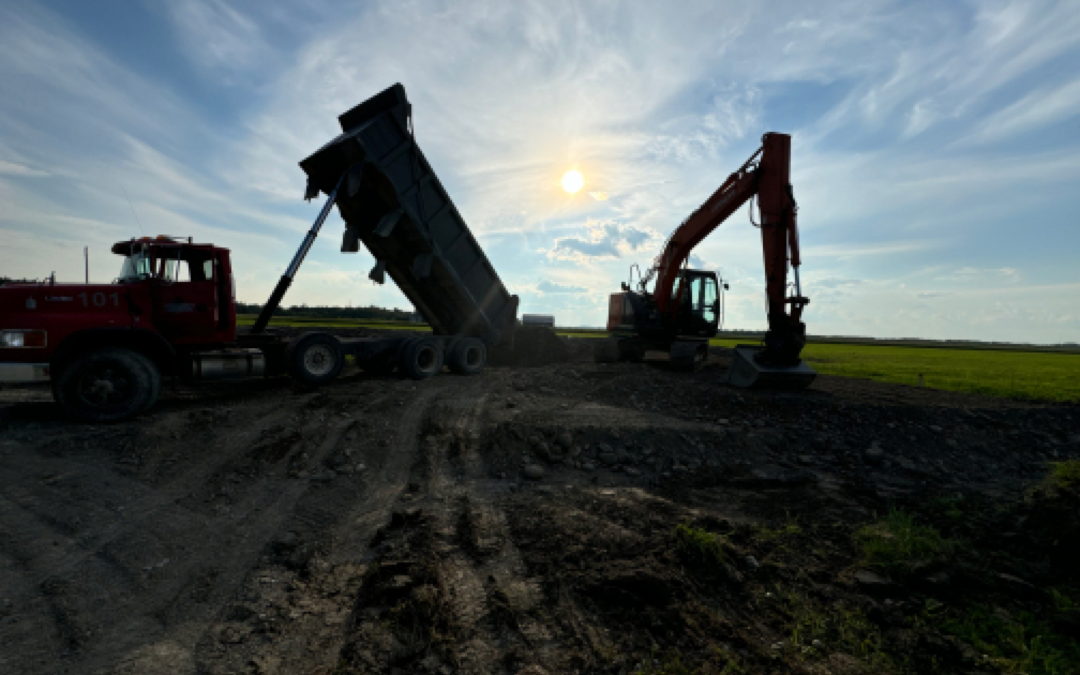If you’ve recently moved into a home with a septic system or are considering installing one, understanding how these systems work is essential. This guide will provide you with a comprehensive overview of septic systems, their components, and how to maintain them properly.
What is a Septic System?
A septic system is an underground wastewater treatment structure commonly used in rural areas without centralized sewer systems. They use a combination of nature and technology to treat wastewater from household plumbing produced by bathrooms, kitchen drains, and laundry.
Components of a Septic System
1. Septic Tank: The septic tank is a watertight container usually made of concrete, fibreglass, or polyethylene. It holds wastewater long enough to allow solids to settle to the bottom (forming sludge) and oil and grease to float to the top (forming scum). Compartments and a T-shaped outlet prevent the sludge and scum from leaving the tank and travelling into the drain field area.
2. Drain Field: The drain field, also known as a leach field or absorption field, is a shallow, covered excavation made in unsaturated soil. Pre-treated wastewater is discharged through piping onto porous surfaces that allow wastewater to filter through the soil. The soil accepts, treats, and disperses wastewater as it percolates through the soil, ultimately discharging to groundwater.
3. Soil: The soil plays a critical role in the treatment of wastewater. It acts as a biological filter, removing harmful bacteria, viruses, and nutrients from the effluent before it reaches the groundwater.
How a Septic System Works
When wastewater enters the septic tank, the solid materials settle to the bottom, while oil and grease float to the top. The remaining liquid wastewater exits the tank into the drain field. The drain field treats the wastewater as it percolates through the soil, which removes harmful coliform bacteria, viruses, and nutrients.
Signs Your Septic System Needs Attention
Regular maintenance is crucial for a well-functioning septic system. Here are some signs that your system may need attention: – Slow Drains: If your sinks, toilets, or showers are draining slowly, it could indicate a clog in the system.- Foul Odours: Unpleasant smells around your septic tank or drain field can signal a problem.- Lush, Green Grass: While a green lawn is usually desirable, overly lush grass around your drain field may indicate that your system is leaking and over-saturating the soil.- Sewage Backups: Backups in toilets or drains are a clear sign of septic system issues that need immediate attention.
Septic System Maintenance Tips Proper maintenance can extend the life of your septic system and prevent costly repairs. Here are some tips: – Regular Inspections: Have your septic system inspected every three years by a professional.- Pump the Tank: Your septic tank should be pumped every three to five years to remove sludge and scum buildup.- Water Conservation: Using water efficiently can improve the operation of your septic system and reduce the risk of failure.- Proper Disposal: Avoid flushing non-biodegradable items, grease, and hazardous chemicals down the drain Conclusion Understanding your septic system is the first step in ensuring it operates efficiently and lasts for many years. Regular maintenance and being mindful of what goes down your drains can prevent most problems. If you have any concerns or need professional assistance, don’t hesitate to contact us. Our team of experts is here to help you with all your septic system needs.

